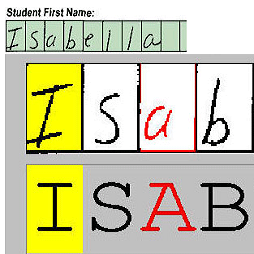Handwriting Recognition has been a field of great interest in the Artificial Intelligence domain. Due to its broad use cases in real life, research has been conducted widely on it. Prominent work has been done in this field focusing mainly on Latin characters. However, the domain of Arabic handwritten character recognition is still relatively unexplored. The inherent cursive nature of the Arabic characters and variations in writing styles across individuals makes the task even more challenging. We identified some probable reasons behind this and proposed a lightweight Convolutional Neural Network-based architecture for recognizing Arabic characters and digits. The proposed pipeline consists of a total of 18 layers containing four layers each for convolution, pooling, batch normalization, dropout, and finally one Global average pooling and a Dense layer. Furthermore, we thoroughly investigated the different choices of hyperparameters such as the choice of the optimizer, kernel initializer, activation function, etc. Evaluating the proposed architecture on the publicly available 'Arabic Handwritten Character Dataset (AHCD)' and 'Modified Arabic handwritten digits Database (MadBase)' datasets, the proposed model respectively achieved an accuracy of 96.93% and 99.35% which is comparable to the state-of-the-art and makes it a suitable solution for real-life end-level applications.
翻译:手写识别是人工智能领域一个引起极大兴趣的领域。 由于其在现实生活中广泛使用的案例, 已经对其进行了广泛的研究。 在这一领域已经开展了显著的工作, 主要是以拉丁字符为重点。 但是, 阿拉伯手写字符识别领域仍然相对没有探索。 阿拉伯手写字符识别领域固有的修饰性质和个人之间写作风格的变异使得任务更具挑战性。 我们找出了其中的一些可能的原因, 并提议了一个基于轻量级神经神经网络的识别阿拉伯字符和数字的架构。 拟议的管道由总共18层组成, 每层包含4层, 用于聚合、 集合、 批次正常化、 退出, 最后是一个全球平均集合和 丁字层。 此外, 我们彻底调查了超参数的不同选择, 如选择优化器、 内核启动器、 启动功能等 。 我们评估了公开提供的“ 阿拉伯手写字符数据集 ( AHCD) ” 和 “ 修改过的阿拉伯手写数字数据库 (MadBase) ” 的拟议架构 。 拟议的模型分别包含一个包含4层, 4层, 每层, 每层各层, 每层, 每层包含一个全球平均集合、 每层集合、 每层集合、 每层集合、 每层集合、 每层集合、 每层集合、 每层集合、 每层一个共享和每层。



